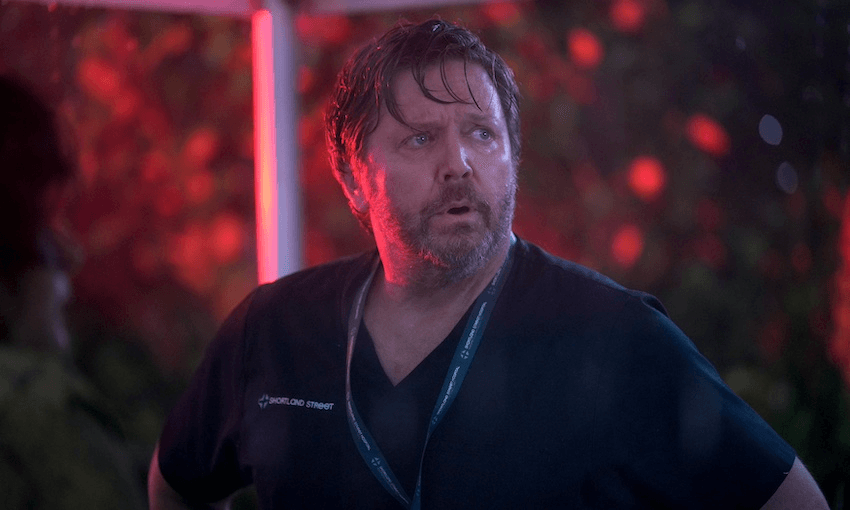The new Netflix comedy features one of television’s most relatable depictions of teenage girlhood, writes Catherine McGregor.
It sounds like the premise of a teen movie. A woman decades past her high school years is destined to revisit them, over and over again. Plot twist: The woman is me, and the high school experiences I keep going back to look a little like my own, but mostly not. The kids in these versions are more attractive and quicker with a one-liner; it’s always sunny and no one wears black. There are parties, but they take place in a mansion with a pool and multiple spare bedrooms, instead of at a friend of a friend’s crummy student flat.
Thanks to Netflix’s unrivalled dedication to the genre, I consume a good amount of teen content these days, but not all of it is created equal. For every witty and humane show like Sex Education, there’s a tedious melodrama like Riverdale. For every charming teen rom-com like To All The Boys I’ve Loved Before, the work that introduced the world to youthful heartthrob Noah Centineo, there are… all the other teen rom-coms Cenineo has starred in since.
Netflix’s latest offering, Never Have I Ever, is one of the good ones. Co-created by Mindy Kaling (The Office, The Mindy Project) and Lang Fisher, who has written for Brooklyn 99 and 30 Rock, it follows 15-year-old Devi Vishwakumar as she navigates the complexities of high school popularity politics and tries her damnedest to lose her virginity to Paxton Hall-Yoshida – a boy so legendarily hot he has “three fan Tumblrs, one entirely in Korean” – all while dealing with the aftermath of her father’s sudden death.
As those names suggest, this is a show where diversity means a lot more than giving the white lead a black best friend – although Devi does happen to have a best friend who is black, and another who is Asian American. Never Have I Ever treats diversity with the same cool nonchalance as most real-life high schoolers do, and watching it I was regularly struck by how far the teen genre has come from the blindingly white – and sometimes straight-up racist – John Hughes movies I grew up with.
Because while the show foregrounds race in some ways, in others it matters not at all. Devi’s identity as an Indian American is foundational to the series, but her struggles – to be popular, to deal with grief, to get on with her mother – are universal. Newcomer Maitreyi Ramakrishnan is exceptional in the role, playing a character who is smart, funny and absolutely fearless, but who also often teeters on the edge of unlikeability. Over the course of the season Devi manages to alienate almost everyone in her life, and though some of her behaviour can be traced back to unresolved trauma over her father’s death, plain old selfishness is also to blame. For anyone who was ever a teenage girl, the show is rarely more relatable than when Devi is making yet another spur-of-the-moment, relationship-fraying wrong decision. Criticise her all you like, but let she who never ditched her friends to hang out with an oblivious cute boy cast the first stone.
While it’s true that the ping-ponging emotions of adolescence are a universal human condition, it can still feel a little weird to find yourself, as an adult, deeply invested in a teen rom-com. But like so many teen-centred shows, Never Have I Ever appears to be very aware of its older viewers, resulting in some pleasantly anachronistic creative choices. The soundtrack is full of ‘80s style synth pop, and a key moment pivots on a character’s love for the U2 anthem “Beautiful Day”, which was released before those in the show’s ostensible target audience were even born.
Most remarkable of all is the fantastically out-there casting of tennis great John McEnroe as the narrator of Devi’s story, in a role that clearly owes a huge debt to Jane the Virgin, another wonderful series about mothers, daughters and the immigrant experience. As with the nameless narrator of that show, McEnroe’s job is to provide a quippy running meta-commentary on the action, in this case all delivered in his trademark holler. Here’s a typical McEnroe remark: “Devi put on a happy face like I did at the trophy ceremony when I lost the French Open to Ivan Lendl in 1984.” Do teenage viewers of Never Have I Ever have the foggiest idea who Ivan Lendl is? Unlikely, but it’s a mark of the show’s confidence – and its admirable dedication to character-defining specificity – that we’re all expected to roll with it, regardless of our familiarity with 1980s Grand Slam tennis.
Despite its idiosyncrasies, Never Have I Ever is at its heart a deeply classic rom-com: a spunky yet uncool heroine finds herself torn between a secretly sensitive heartthrob and a Mr Darcy-ish antagonist who may just turn out to be Mr Right. It’s traditional in all the best ways, while still feeling like one of the most unusual teen shows in years. You’ll laugh, you’ll cry, you’ll develop a new appreciation for John McEnroe’s comic timing. In these dark days, what more could you want?


